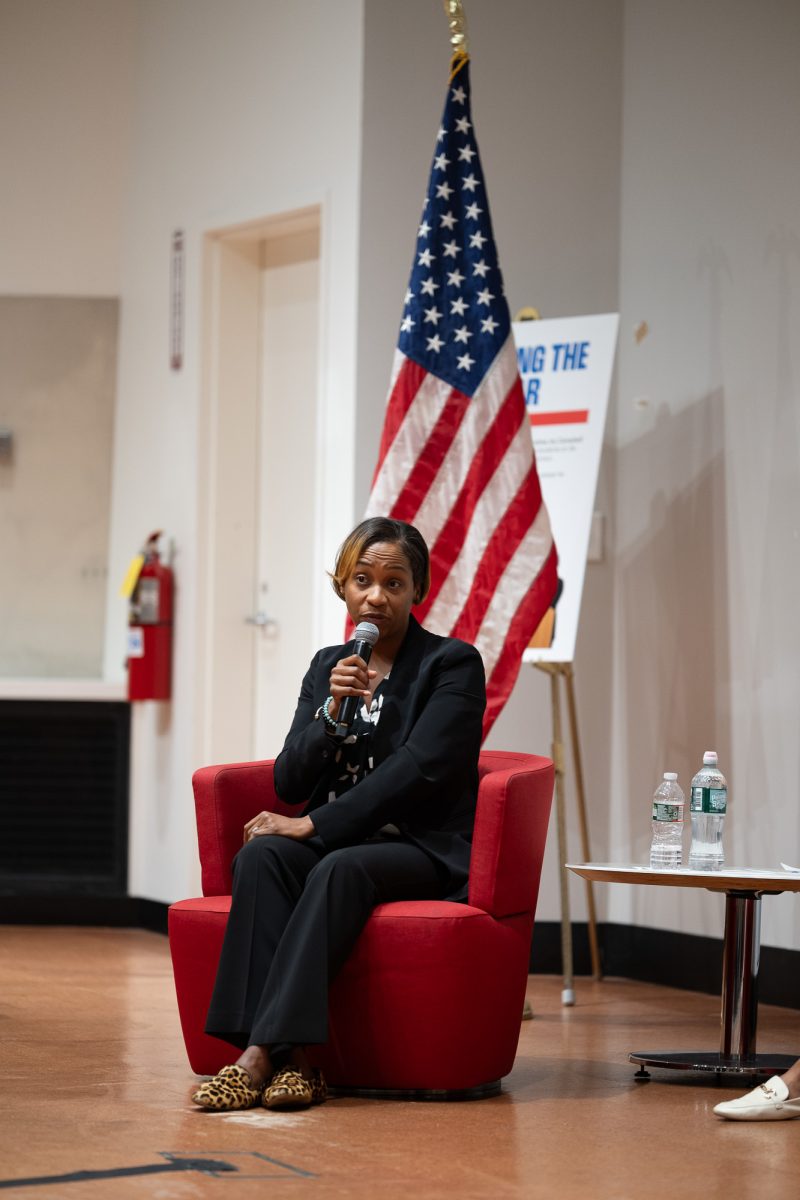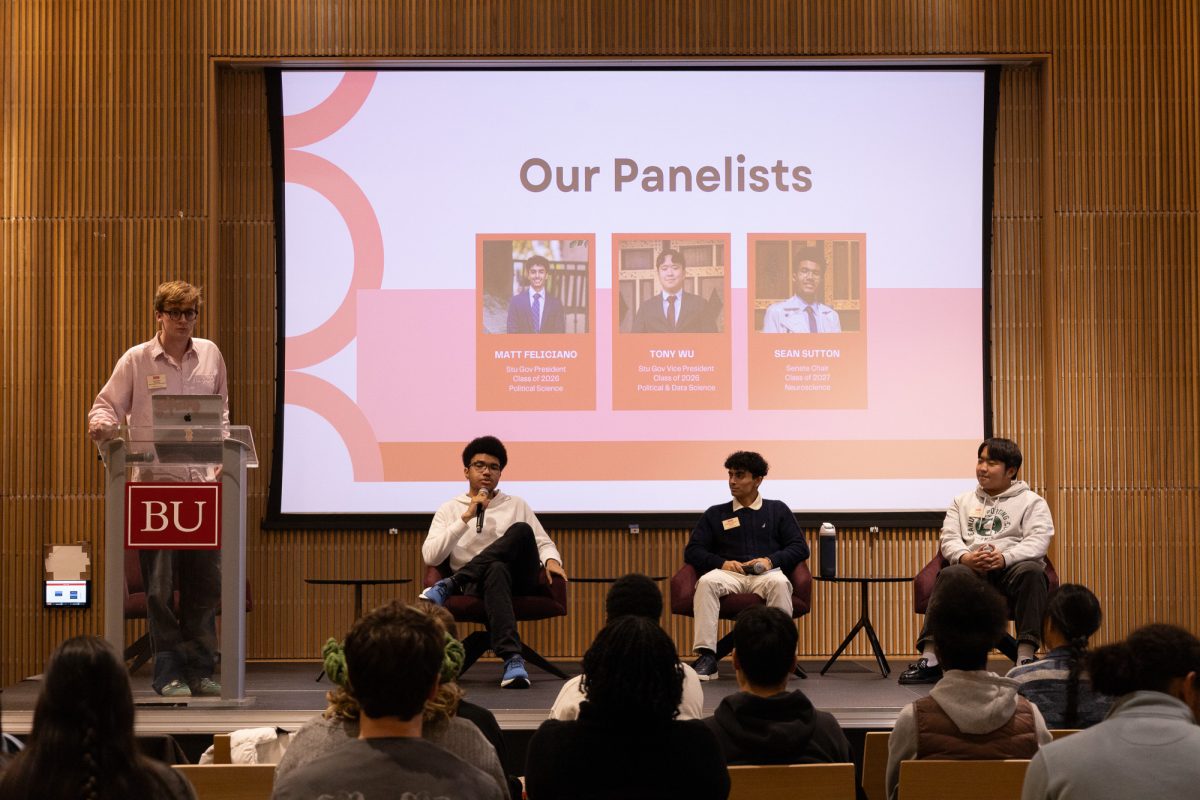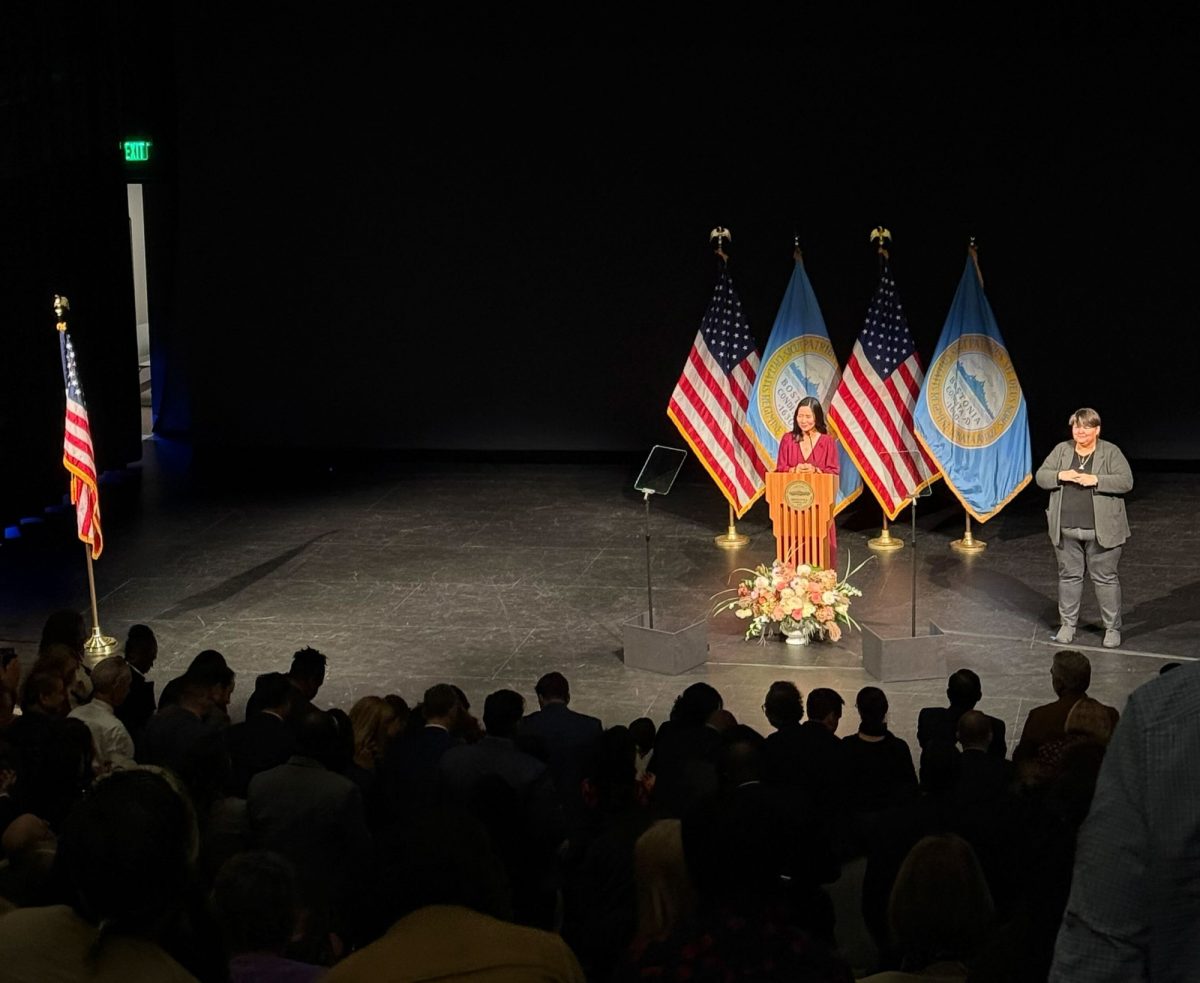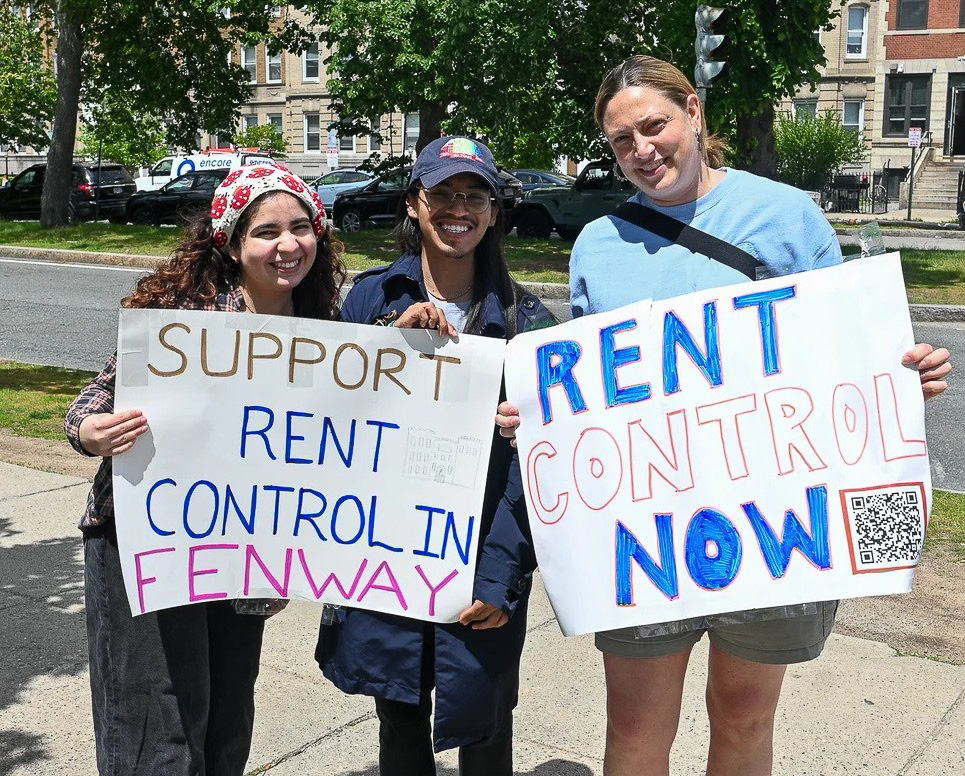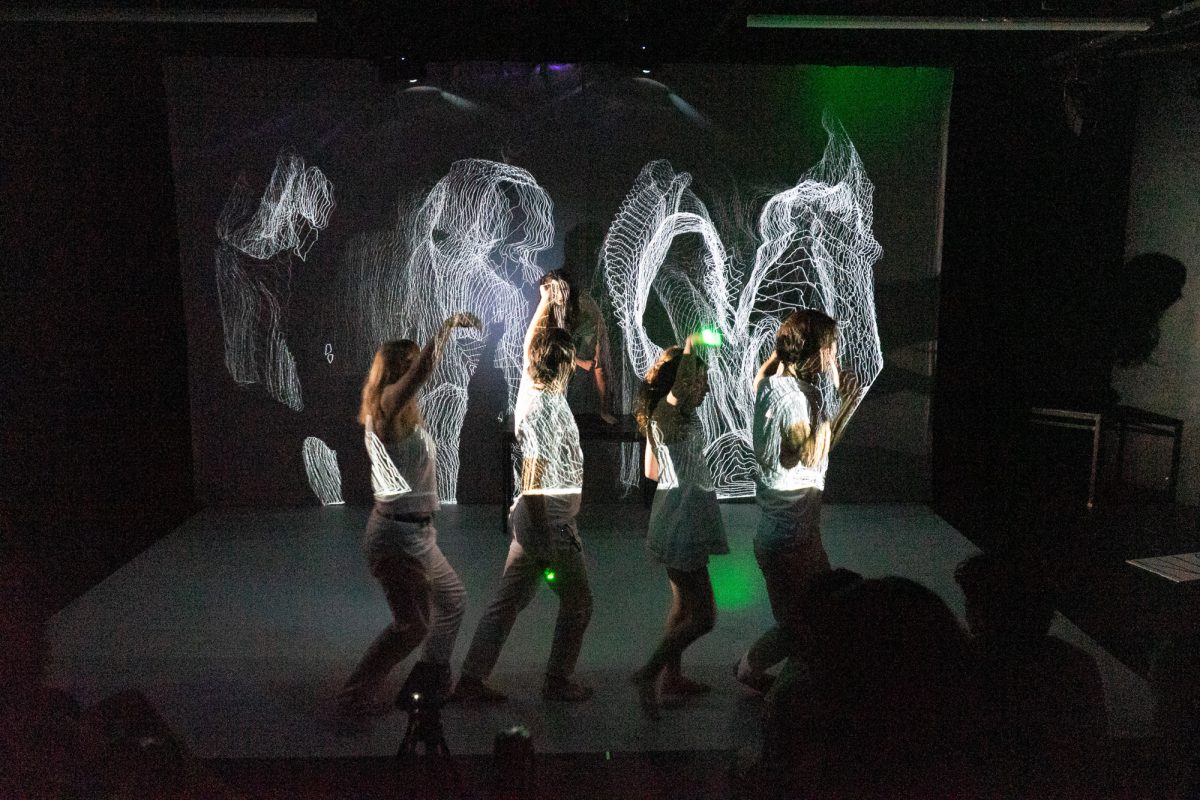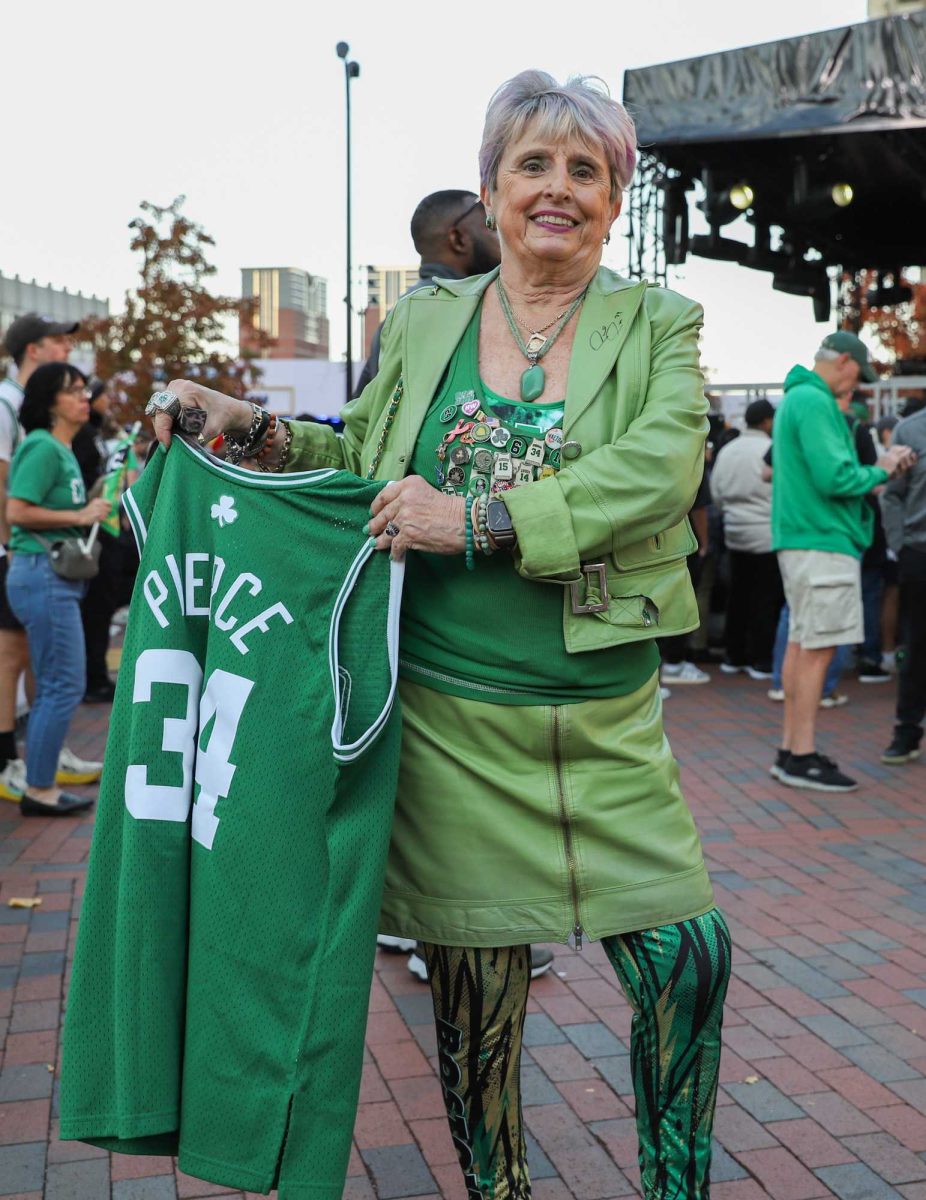Hu-Kwa, pu-erh, oolong, Darjeeling: All these teas come from the same plant, but their flavors range from smoky and fermented to sweet and flowery. Hartley Johnson, the owner of the Mark T. Wendell Tea Company, taught a group of about 15 about the science behind tea during a workshop at the Nichols House Museum in Beacon Hill on Saturday.
The Nichols House Museum is a four-story townhouse that reflects the typical domestic life of a Beacon Hill family at the turn of the 20th century. The Nichols family’s oldest daughter, Rose, grew up in the house and lived there until her death in 1960.
Johnson’s program was meant to showcase the relationship between the Mark T. Wendell Tea Company and Rose, who was a pacifist and women’s rights activist, and would often hold tea parties in her home for members of the community.
“These were really vehicles for social discussion, and she would invite people from different political points of view … and really try to foster discussion about controversial issues at the time,” said Charlotte Wittmann, the communications and administration associate at the museum.
Johnson said during the presentation that Mark T. Wendell himself lived in the area and would often deliver tea right to the Nichols doorstep for Rose’s tea parties. Rose’s favorite was a unique kind of black tea called Hu-Kwa, which has a strong smoky aroma and bitter aftertaste.
Participants in Saturday’s program had the opportunity to taste Hu-Kwa, as well as Min-Pei Fancy Oolong tea and Organic River Mist Green tea.
“The fact that the company is still in business and still producing the same Hu-Kwa tea seemed like a great opportunity to bring new information in for people about tea production, but also to have this historical connection with Rose and what was going on in the house in the early 20th century,” Wittmann said.
Beyond just trying historical teas, Johnson gave a short history lesson and talked about the science behind the different kinds of teas. Participants smelled the company’s seven main kinds of tea — white, green, jasmine, oolong, black, pu-erh and herbal — and learned about how different types of tea actually all come from the same plant.
Johnson, whose company has been distributing tea for 114 years, said tea is becoming hip again because of publicity about tea’s health benefits. Johnson said what he finds most amazing is the way tea’s role in society has changed since the company’s founding.
“The interesting part was the history involved with Rose Standish Nichols and the house here and Mr. Wendell, the company’s original owner, actually living in this area and bringing tea here in an era when tea what just an unheard of, very high-end commodity,” Johnson said.
Stephanie Hall, a visitor services representative at the Nichols House Museum, said hosting programs like the tea tasting allows a different kind of audience to learn about Rose Standish Nichols, a woman who broke boundaries through activism and pursuing a career in landscape architecture.
“The tea parties in particular were the facilitator to Rose’s bigger goal of social activism, women’s rights and peace activism because … she would host lively debates about different political topics and social topics,” Hall said.
The tea program was planned to coordinate with a holiday exhibition called “Peace and Prosperity: Rose Standish Nichols and Tea.” The exhibit, which is on view through Feb. 3, focuses on the history of tea production, the Nichols family’s relationship to tea and the decorative aspect of tea objects that Rose and her mother collected.
“It wasn’t just about modes of decorum in society, but it was about getting people together over a cup of tea in the interest in having a conversation and furthering these social and political agendas that were very meaningful to women,” said Laura Cunningham, the museum’s programs and collections coordinator. “It also was a way for Rose Nichols and her mother to showcase their collection of fine porcelain and silver.”
Cunningham said the organizers also wanted to focus on the impact tea has had on Boston’s history, from the American Revolution to modern day. She said one of the museum’s main goals is to connect with Boston’s history and have the house be a bridge between ideas the residents might have discussed around the turn-of-the-century and 21st century ideas.
“Having these conversations in a historic space helps to bring the space into what otherwise could be a static, unmoving collection deeply rooted in the past,” Cunningham said. “It becomes activated by the very topical conversations had in these spaces.”


